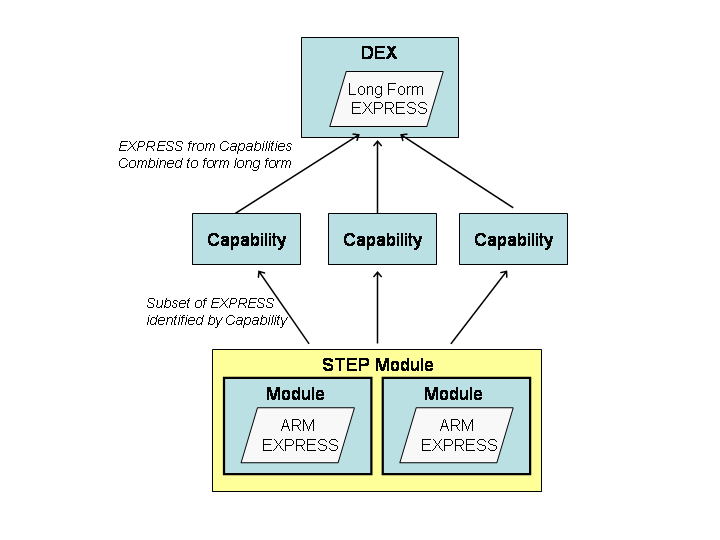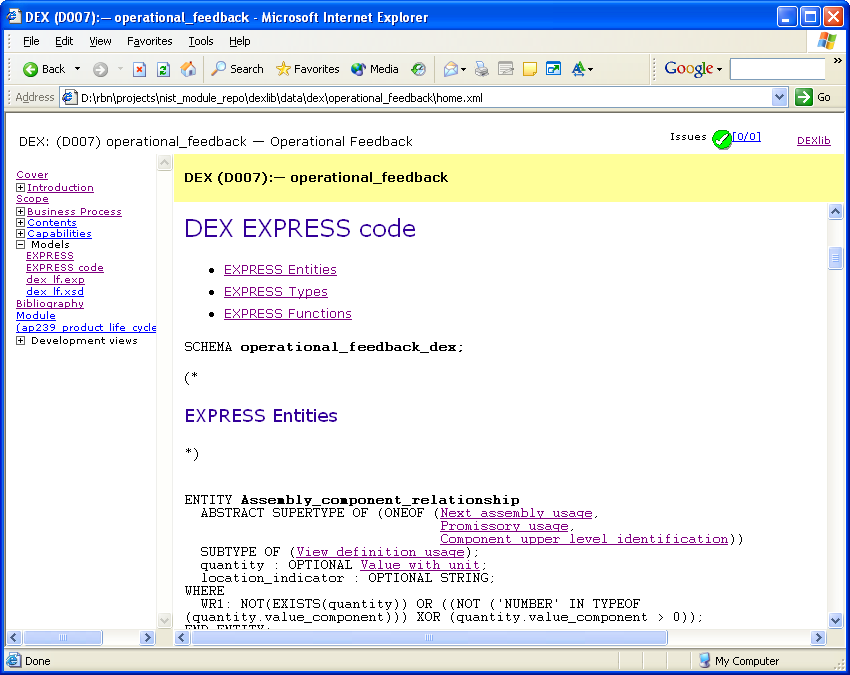
| Help TOC > Instructions for DEX developers > Developing DEX Specifications > EXPRESS long forms | |
| EXPRESS long forms | Date: 2008/02/26 10:25:17 Revision: 1.9 |
Each DEX is made up of a series of capabilities. Each capability will specify the subset of the ISO 10303-239 (PLCS) EXPRESS model that is required. The EXPRESS models are defined in the ARM of a STEP module. This is shown in Figure 1 below.

The capability specifies the EXPRESS using the <usage> element. This identifies whether an EXPRESS entity is to be included or excluded from the capability EXPRESS.
Each DEX has two normative files that specify the long form:
The DEX long form is build by pruning the long form specified in the PLCS AP module long form - ap239_product_life_cycle_support (the AP long form). The approach used is as follows:
The process for building a long form is as follows:
Display the EXPRESS code for the DEX as shown in Figure 2. This will dynamically extract the EXPRESS defined by the capabilities.
Menu: models->EXPRESS

Convert the dex_lf.exp to the EXPRESS XML representation. One way that this can be done is by using the Eurostep Express Parser (EEP) available from (http://www.eurostep.com).
c:/apps/eep/Eep.exe -t -i -w -x dex_lf.exp
This will produce Model.XML which should be copied to dex_lf.xml
Menu: Development views -> dex_lf.xml as XML Schema